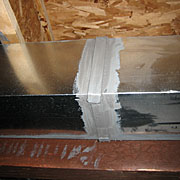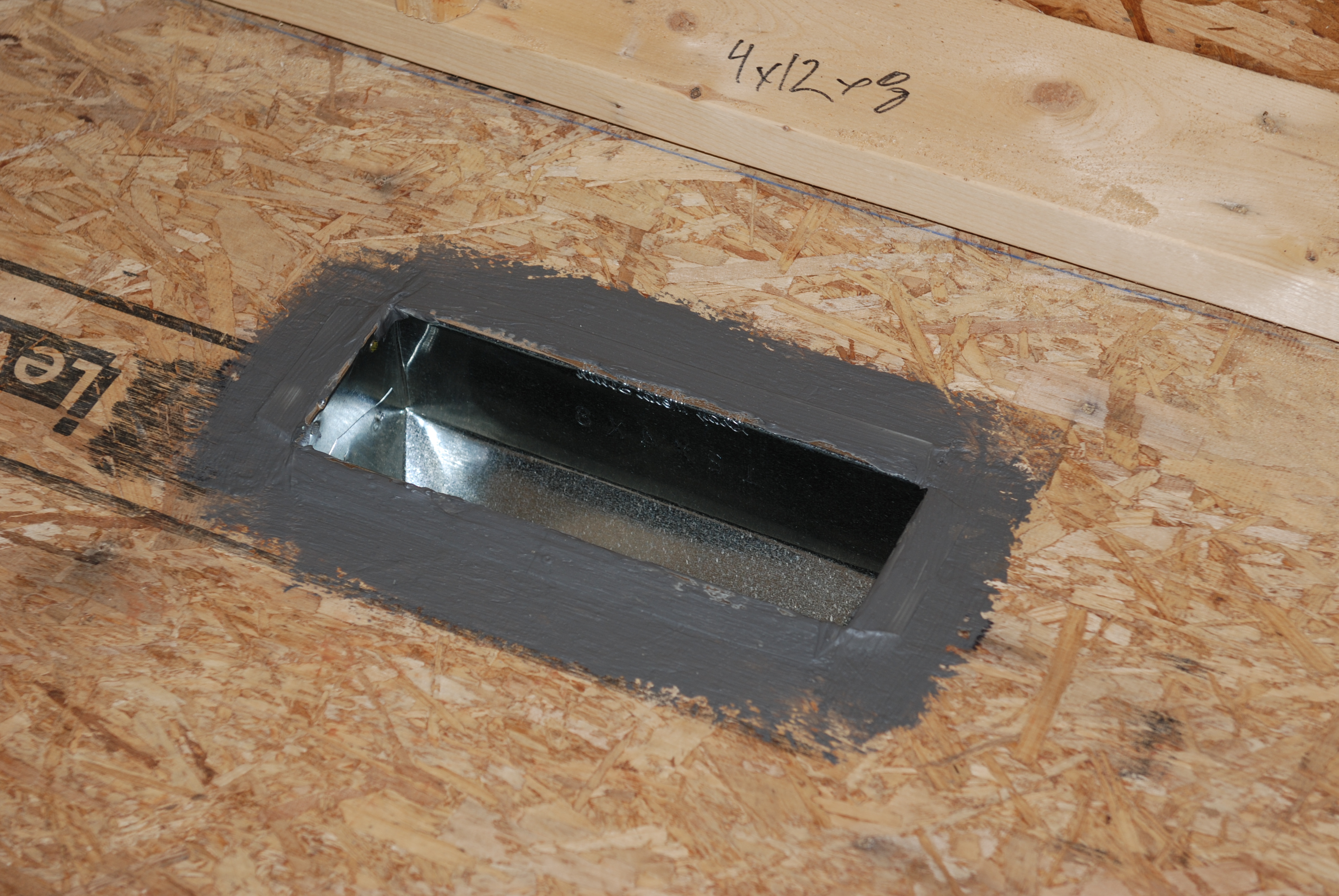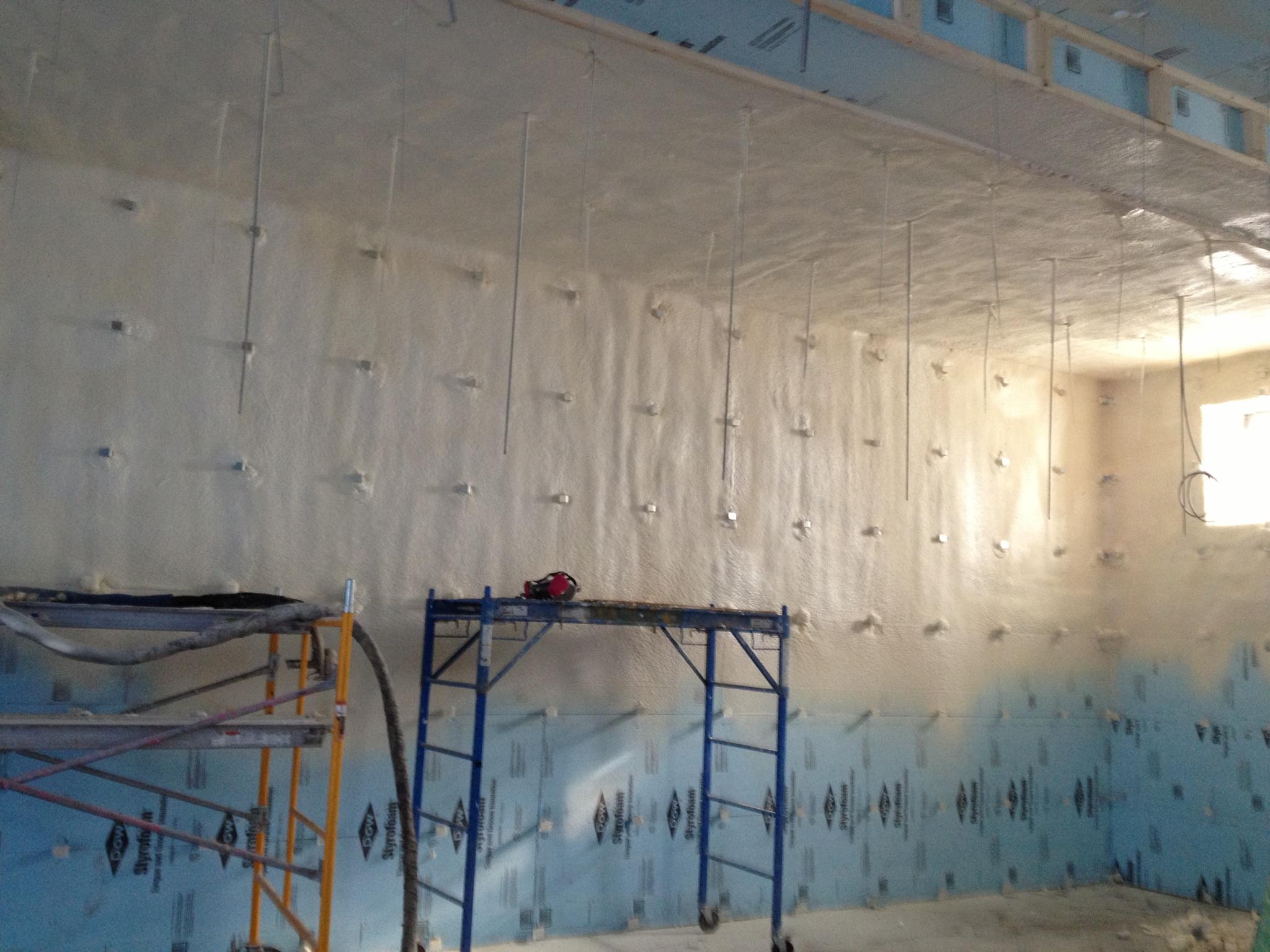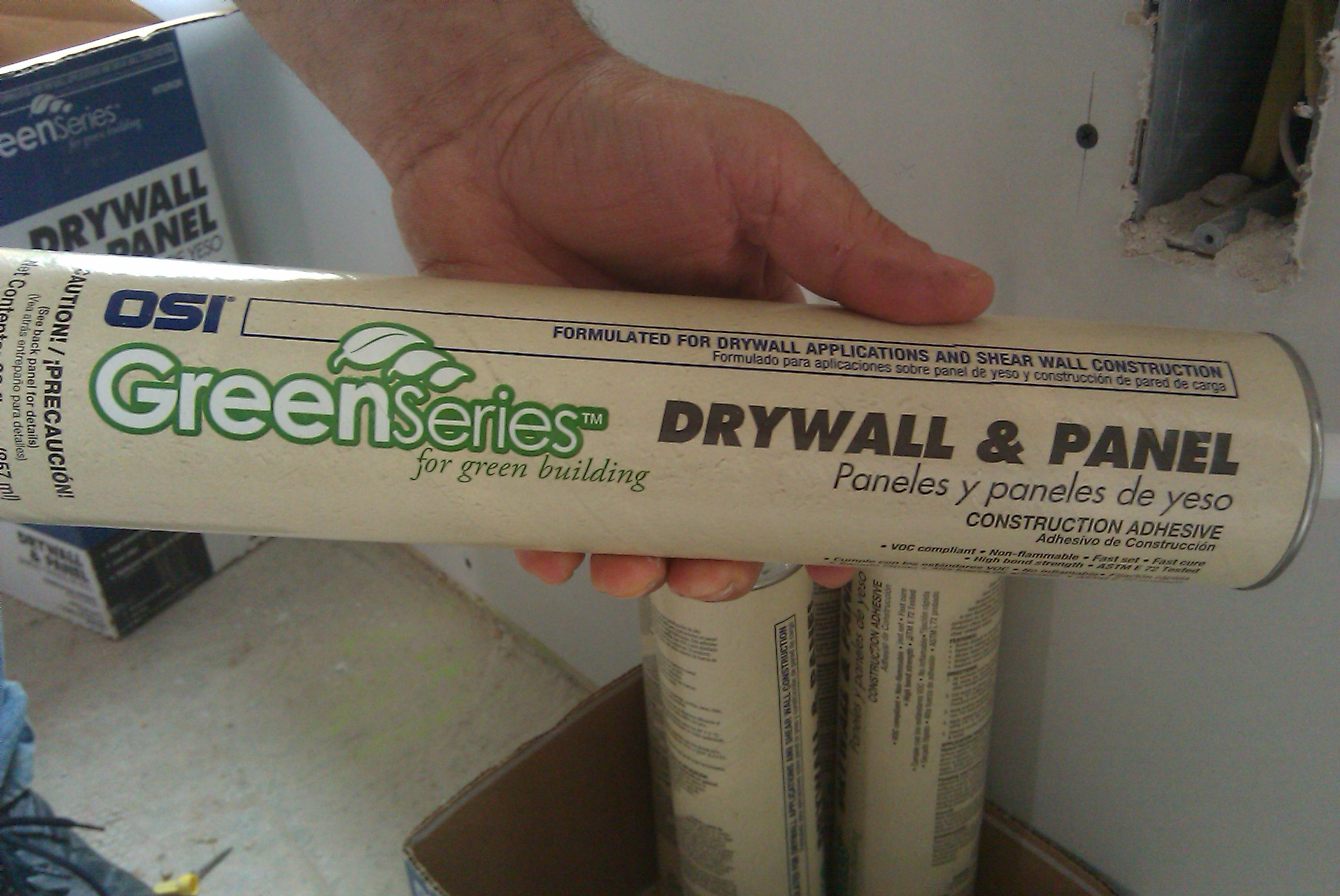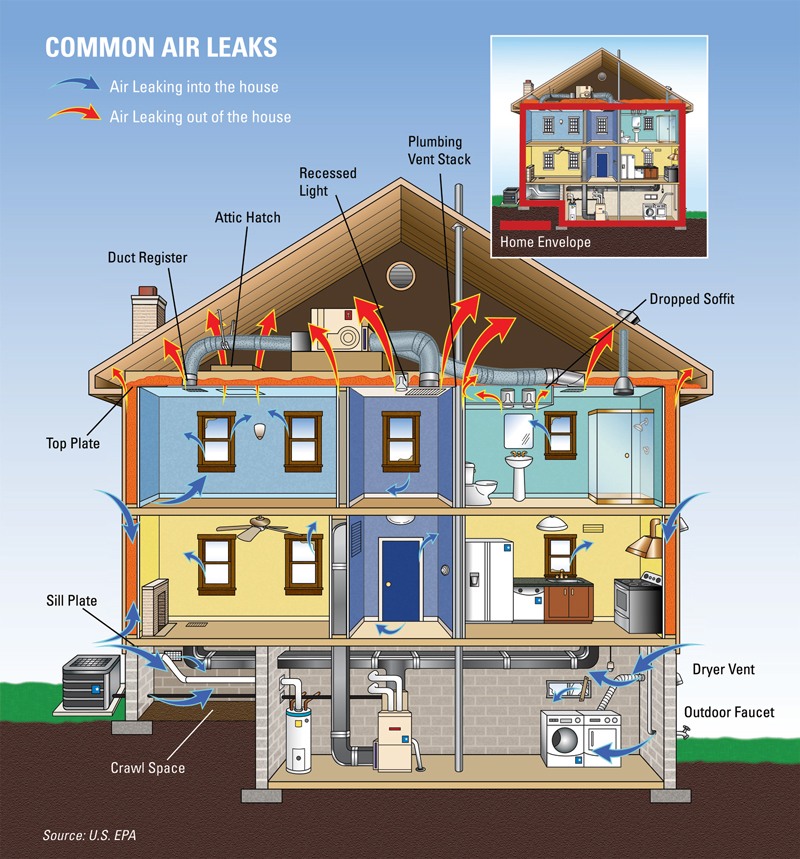by harrisonburgarchitect | Dec 16, 2013 | architecture, Building Science, Harrisonburg Architect, Indoor Air Quality
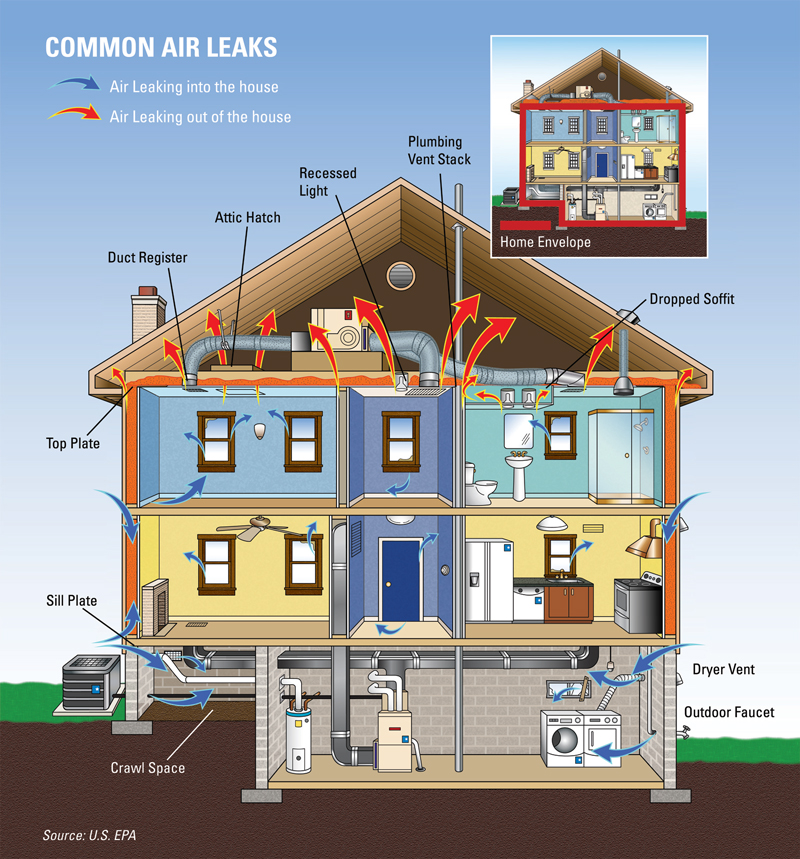 Most of us know the miles-per-gallon of our cars. I just went through (for me) the very painful process of purchasing a new (used) car. I weighed the options looking at asking price, insurance premium, maintenance costs, and miles per gallon. These should all be factors when purchasing or building a new home. However, we almost never know the miles per gallon equivalent for a building. That is because a HERS rating is not required in Virginia. It is however, a test that is easy to request as part of your evaluation process for existing homes or performance criteria for new construction.
Most of us know the miles-per-gallon of our cars. I just went through (for me) the very painful process of purchasing a new (used) car. I weighed the options looking at asking price, insurance premium, maintenance costs, and miles per gallon. These should all be factors when purchasing or building a new home. However, we almost never know the miles per gallon equivalent for a building. That is because a HERS rating is not required in Virginia. It is however, a test that is easy to request as part of your evaluation process for existing homes or performance criteria for new construction.

A home energy rating is an analysis of the efficiency of the home’s energy usage. The Home energy Rating System (HERS) is the nationally recognized scoring system for measuring a home’s energy performance. The results of the test give you a HERS Index Score. This miles-per-gallon for your home allows you to compare how your home is performing vs a baseline accepted standard. The test and report also gives you a checklist of areas that could use attention to improve your homes performance.
For more information read here, here, and here.
by harrisonburgarchitect | Dec 13, 2013 | architecture, Building Science, Harrisonburg Architect, Indoor Air Quality
 I respond to a lot of requests for proposals and do a lot of interviews for new design projects. Sometimes there is a higher standard to which the new design needs to meet, and sometimes the potential project is only aiming for building code minimum standards. What quality do you want for your home / business?
I respond to a lot of requests for proposals and do a lot of interviews for new design projects. Sometimes there is a higher standard to which the new design needs to meet, and sometimes the potential project is only aiming for building code minimum standards. What quality do you want for your home / business?
When you start planning your new commercial building, home, or renovation project, what standard will you set for the construction? Many people assume that building code is a good standard that will deliver a quality project. They also assume that if a building “meets code,” it will perform well over time, be efficient, and be durable.

Unfortunately, that is not the goal of the building code. The building code is a reactive document that is modified over time (in Virginia every 3 years) very slowly to protect the health, safety, and welfare of the general public as a minimum standard. The standards in the code come from failures that have been identified in the past and serve as a way to protect against repeating those same failures. There is a lot of information about structural needs in a building. There is a heavy focus on fire safety. Building code even sets some very minimum standards for energy usage. However, setting the building code as a standard for your projects structural performance will not deliver a home that prevents the china from rattling as you walk past. It is a minimum standard that will simply deliver a project that is structurally safe. If you want a building that is energy-efficient, the building code is not a place to look for standards. This is again, a minimum guideline that does not look at the interconnections between systems and the performance of a building. You can construct a code compliant building that costs you a fortune to maintain each month that is almost never comfortable. You can construct a code minimum building that has low performance, unhealthy indoor air, and high energy bills.

When you are planning your next building, it is important to ask yourself some key questions:
What is your goal for energy usage?
How much maintenance will you find acceptable?
How much “bounce” is acceptable in your floor system?
What kind of priority is the indoor air quality?
These are all questions that building to code will be delivered at a very minimal level. Some of these questions address quality issues and some are systems coordination. A high performance building should be a goal for all of us. Evaluate all the building standards available or hire someone that understands these systems to help set the standards. Using LEED and EarthCraft is a good start to help you evaluate your goal, but don’t stop there. Look beyond these rating systems and think about what comfort you desire in your project. This is where you will make some really valuable decisions about quality and priority. If you want a building that is energy-efficient, healthy, and durable, code minimum is not the answer.
by harrisonburgarchitect | Dec 11, 2013 | architecture, Building Science, Harrisonburg Architect
We do a variety of renovation projects from basements, garages, to kitchen additions. The one consistent element between them all is our clients want a healthy, energy-efficient, and durable building solution. This basement renovation is no exception. Here is a blog post from our client about the energy audit performed on the entire home including the basement.
So this the where we started on the basement renovation project.

basement renovation

And here is the current state of the basement.

basement renovation



by harrisonburgarchitect | Dec 10, 2013 | Harrisonburg Architect
On a tight budget or want to reduce your environmental footprint? Build smaller! Here are some simple tips to get you thinking about how you can get the highest value for your space:
 Maximize your usable space – Get rid of rooms that don’t add value to your way of life. Do you need a formal living room? What about a foyer? If you don’t need it, don’t include it.
Maximize your usable space – Get rid of rooms that don’t add value to your way of life. Do you need a formal living room? What about a foyer? If you don’t need it, don’t include it.- Flexibility of space – Create a large central space that can serve multiple functions. If your normal pattern is a dining table that seats 4 people, don’t create a space for 12 everyday. Look for ways to manipulate spaces as needs change.
- Open your home up to the views – This is a delicate balance between insulation / energy performance and lots of glass. However, letting in natural light and locating windows in the right places to capture views will make your smaller footprint seem larger.
- Strategically place windows – Not only capturing the views, but locating windows at the end of a hallway or in a corner will make the room feel larger.
- Use transitions between spaces instead of full height walls – If a low wall can be used to define a space while keeping an open floorplan, use it as your tool to keep your footprint small.
- Incorporate creative storage spaces – Wall niches, bookshelves, and wall cavities are places to carve out extra storage without increasing the building footprint.
 Raise the roof – Tall ceilings allow you to use transom spaces above windows and doors bringing in extra light and opening up views
Raise the roof – Tall ceilings allow you to use transom spaces above windows and doors bringing in extra light and opening up views- Build in furniture – A table that folds down when needed or a floor that opens up to reveal a bed allow spaces to serve multiple functions
- Minimize circulation spaces – The more spaces you can include in a functional space and the less in circulation the smaller the footprint is kept and the more value is delivered
- Open up to the outdoors – Use your landscape around the home to enlarge usable spaces. A patio can become a larger dining room or a deck is a living room. These spaces enlarge your usable space without enlarging the footprint of the structure.
by harrisonburgarchitect | Dec 9, 2013 | architecture, Building Science, Harrisonburg Architect, Indoor Air Quality
In a home with a forced-air heating and cooling system, the system used to distribute air is called duct work. In an average home, 30% of the air sent through the duct work system is lost due to leaks, holes, and poorly executed connections. The result to your wallet is higher electric bills and lower comfort.

The best way to seal up these ducts during construction is using a paint on mastic or mastic tape. While other tapes fail over time, Mastic stays stuck to your ducts creating an air tight air distribution system.
The benefits of a tight air duct system include comfort, indoor air quality improvements, lower electric bills, and a reduced impact on the environment.

For more information on improving your heating and cooling system, click here and here.
by harrisonburgarchitect | Nov 25, 2013 | architecture, Building Science, Harrisonburg Architect, Indoor Air Quality

During Construction
Air sealing is the first line of defense against wasting energy in your home and protecting your indoor air quality. Air sealing is the practice of filling all those gaps, cracks, and holes in your thermal envelope. This tightens the home’s air pressure giving you a solid thermal envelope.

Air sealing is the most effective way to reduce energy consumption in your home. It will also help protect indoor air quality in your home and the durability of your building materials. In a typical home, air leaks through walls, crawl spaces, attic, around windows, and doors. This air is not filtered and leads to dust particles and potentially dangerous chemicals in the indoor air. Making your home air tight also stops moisture moving through building materials. Bulk moisture migrating through building materials could lead to rot or mold growth.
The most common materials used to air seal your home is a latex or silicone caulk. Other materials that can be used include expanding foams, weatherstripping, or dense insulation materials like cellulose. Done right with a holistic approach to building science, these strategies help create a high performance building solution.
 Most of us know the miles-per-gallon of our cars. I just went through (for me) the very painful process of purchasing a new (used) car. I weighed the options looking at asking price, insurance premium, maintenance costs, and miles per gallon. These should all be factors when purchasing or building a new home. However, we almost never know the miles per gallon equivalent for a building. That is because a HERS rating is not required in Virginia. It is however, a test that is easy to request as part of your evaluation process for existing homes or performance criteria for new construction.
Most of us know the miles-per-gallon of our cars. I just went through (for me) the very painful process of purchasing a new (used) car. I weighed the options looking at asking price, insurance premium, maintenance costs, and miles per gallon. These should all be factors when purchasing or building a new home. However, we almost never know the miles per gallon equivalent for a building. That is because a HERS rating is not required in Virginia. It is however, a test that is easy to request as part of your evaluation process for existing homes or performance criteria for new construction.
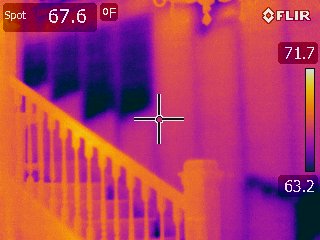
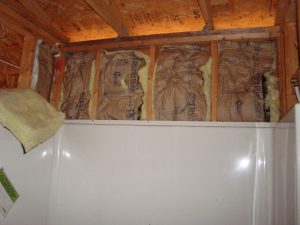 I respond to a lot of requests for proposals and do a lot of interviews for new design projects. Sometimes there is a higher standard to which the new design needs to meet, and sometimes the potential project is only aiming for building code minimum standards. What quality do you want for your home / business?
I respond to a lot of requests for proposals and do a lot of interviews for new design projects. Sometimes there is a higher standard to which the new design needs to meet, and sometimes the potential project is only aiming for building code minimum standards. What quality do you want for your home / business?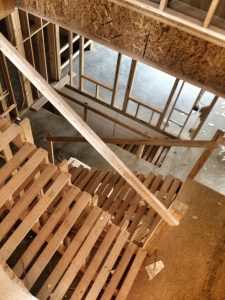
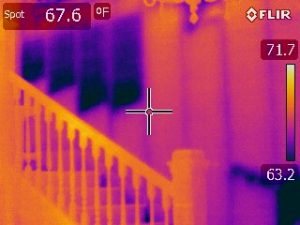
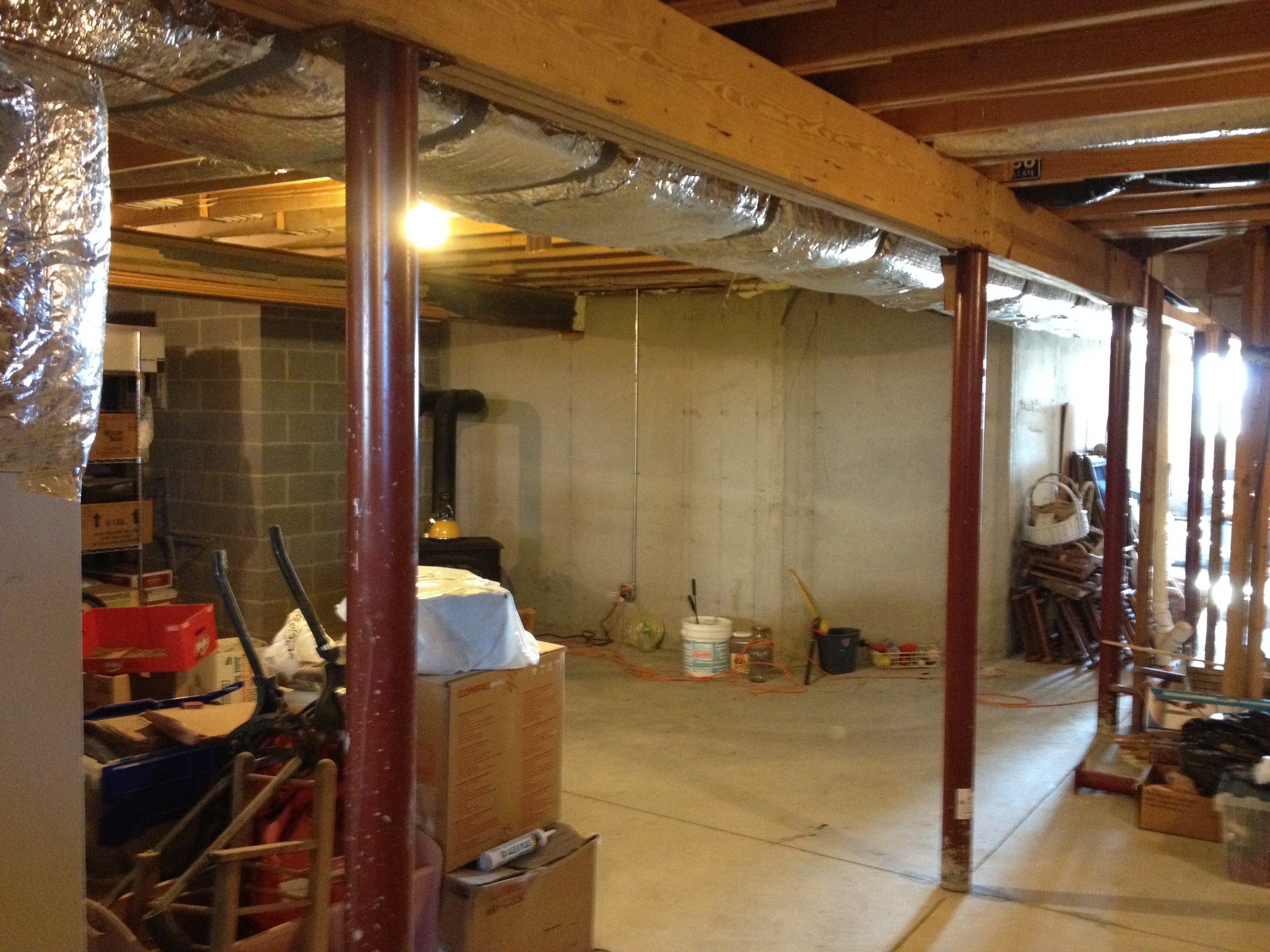
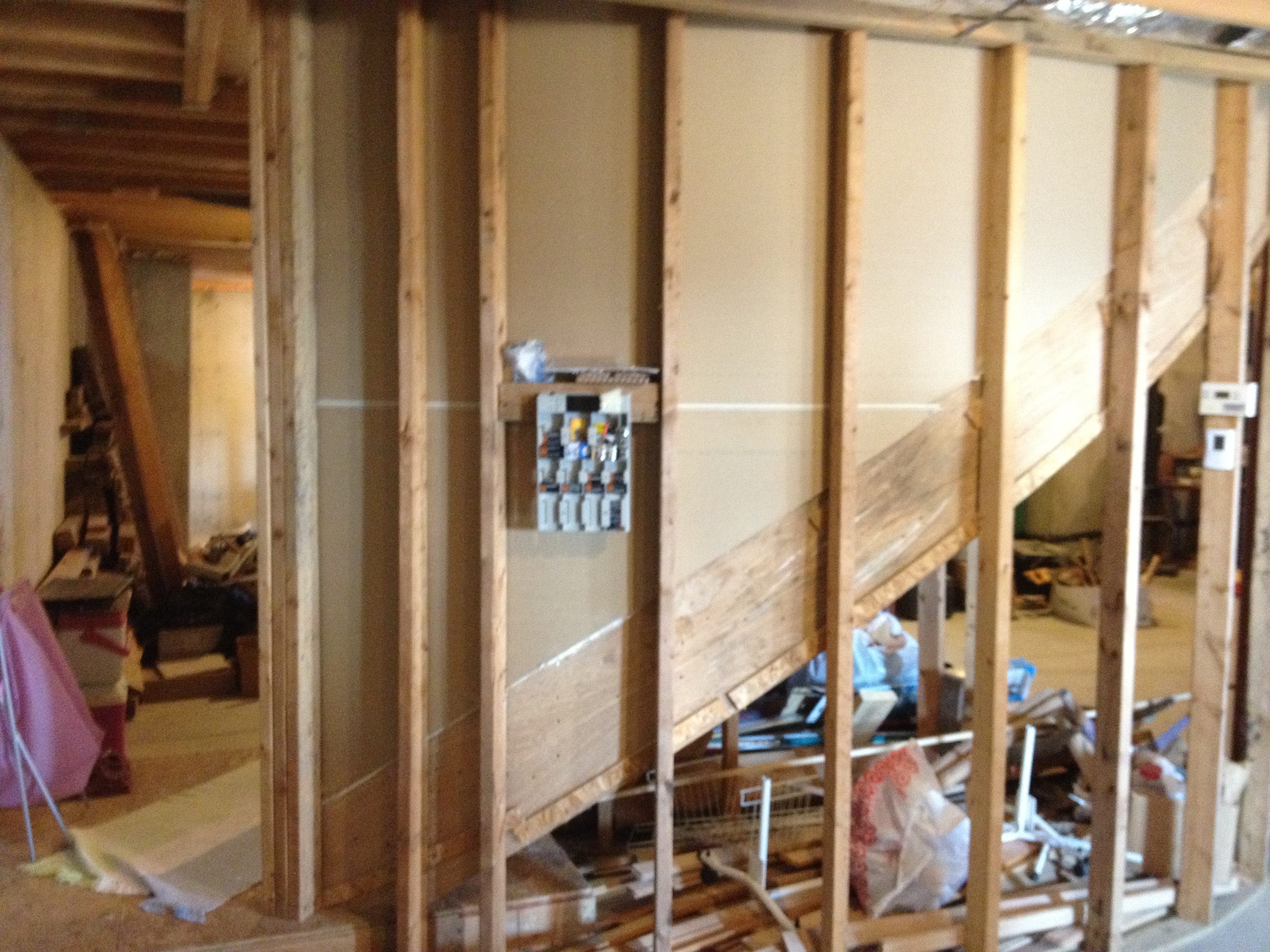
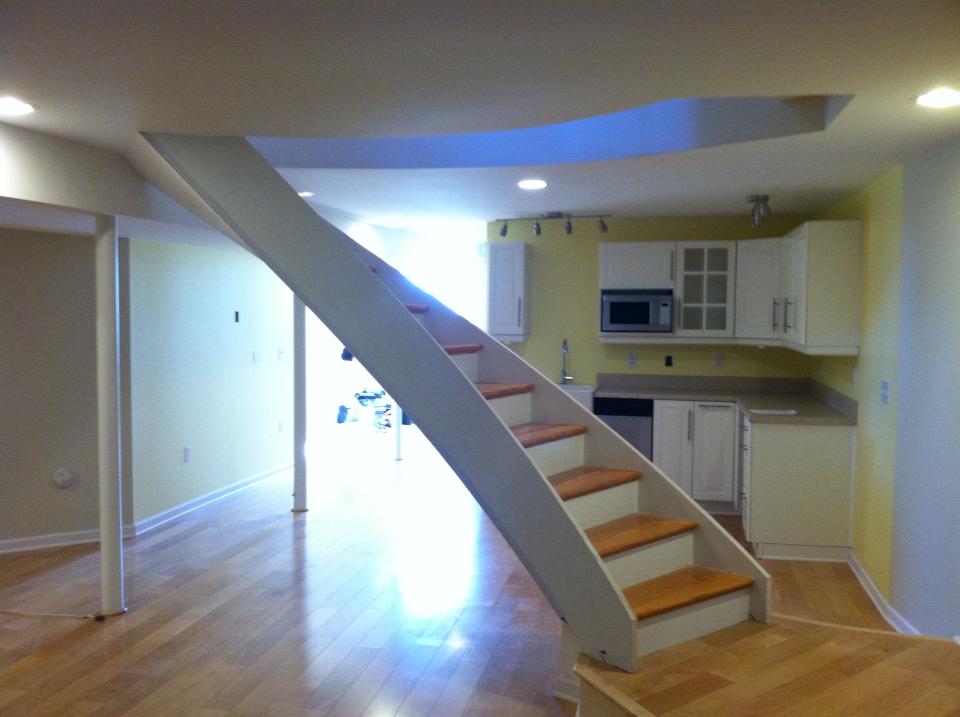
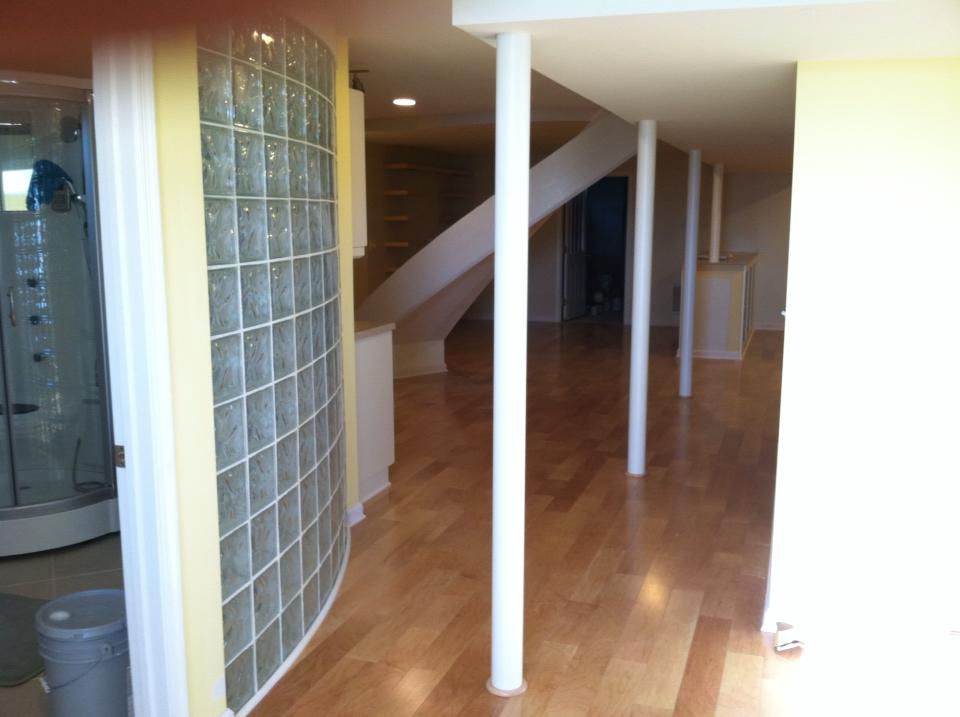
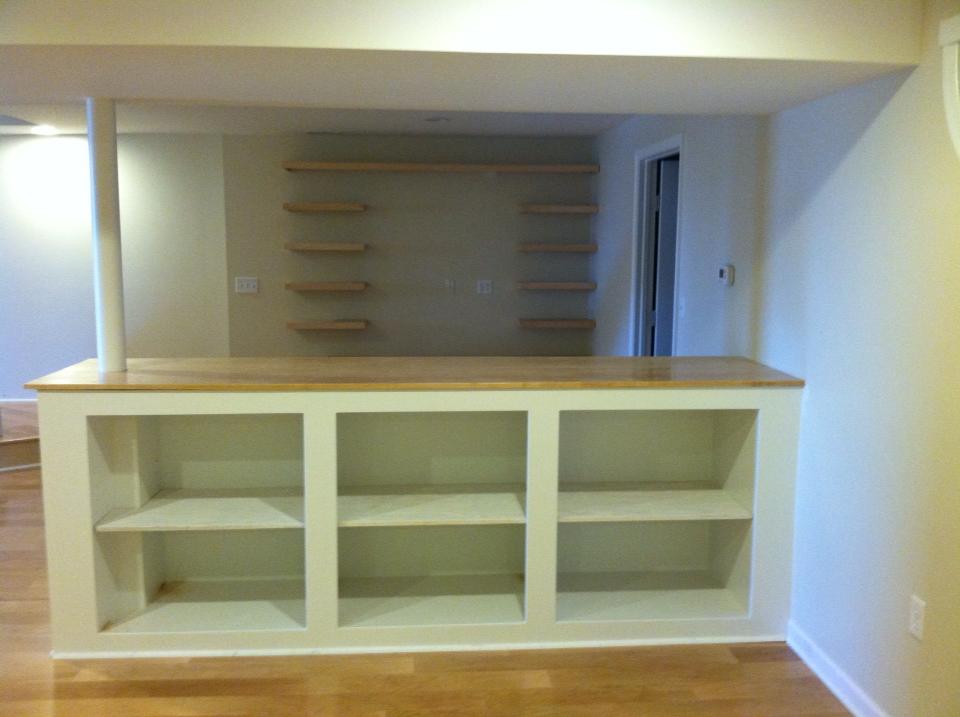
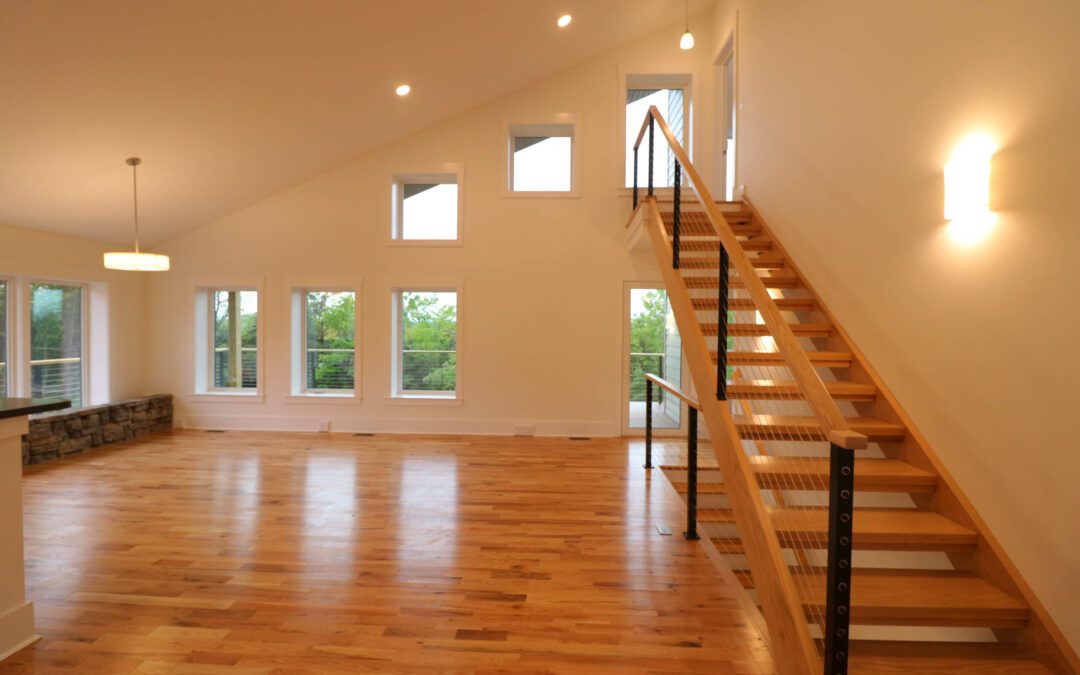
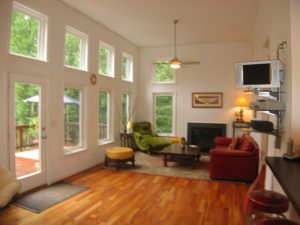 Maximize your usable space – Get rid of rooms that don’t add value to your way of life. Do you need a formal living room? What about a foyer? If you don’t need it, don’t include it.
Maximize your usable space – Get rid of rooms that don’t add value to your way of life. Do you need a formal living room? What about a foyer? If you don’t need it, don’t include it.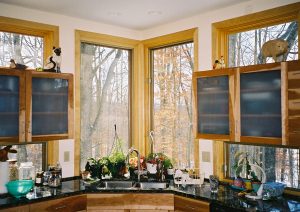 Raise the roof – Tall ceilings allow you to use transom spaces above windows and doors bringing in extra light and opening up views
Raise the roof – Tall ceilings allow you to use transom spaces above windows and doors bringing in extra light and opening up views